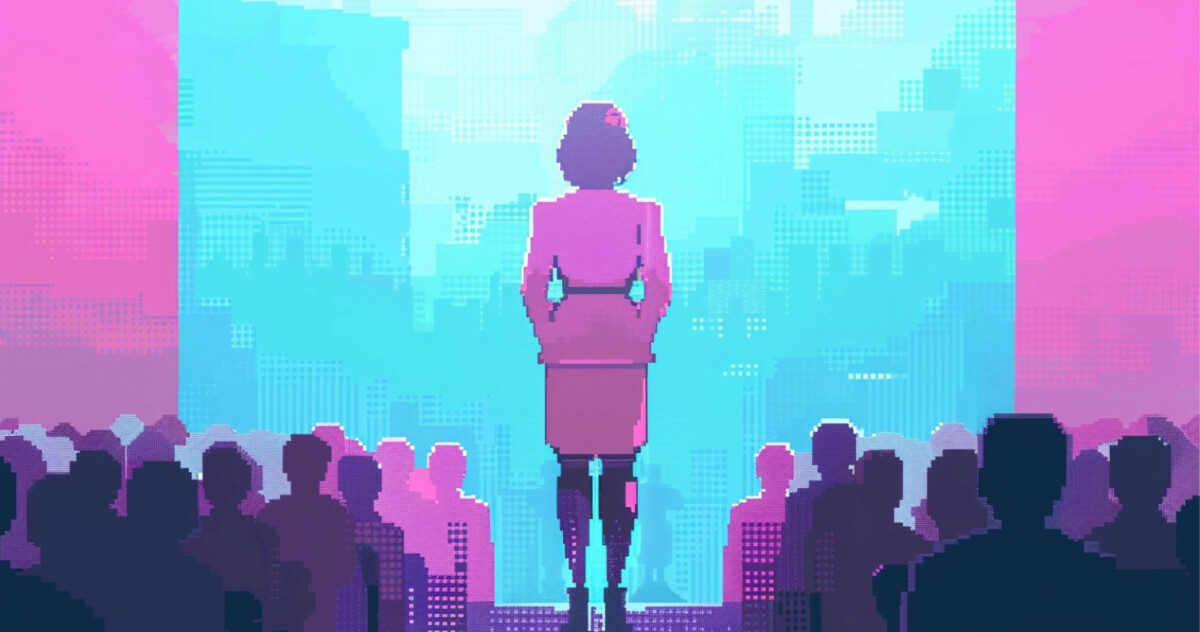A recent manipulated video featuring an AI-generated voice of Vice President Kamala Harris is raising alarms as the US election approaches. This video, shared by Elon Musk on his social media platform X, mimics Harris’s voice, making statements she never made, without any indication that it was a parody.
The video uses visuals from a real Harris campaign ad but swaps the voice-over with an AI impersonation, falsely attributing controversial statements to her, such as calling her a “diversity hire” and accusing her of incompetence. Harris’s campaign has condemned the video, emphasizing the importance of truth and authenticity.
AI-Generated Content and Political Misuse
What Happened:
- AI-generated video falsely represents Vice President Kamala Harris.
- Shared by Elon Musk on social media platform X.
- Uses real visuals from a Harris campaign ad with a manipulated voice-over.
The Reaction:
- Harris’s campaign strongly condemned the video.
- Emphasis on the need for truth in political content.
The Need for Stronger Regulations
This incident underscores the dangers of AI-generated content in politics and the urgent need for stronger regulations.
Currently, there is a significant lack of federal regulations on AI use in campaigns, although some states and social media platforms have implemented policies. The federal response, however, has yet to materialize. The video raises critical questions about how to handle AI content that blurs the lines between satire and misinformation.
Remember how everyone thought Katy Perry was at the Meta Gala when she was in fact not?
Key Concerns:
- Lack of federal regulations on AI use in political campaigns.
- Varied policies among states and social media platforms.
- The blurred line between satire and misinformation.
The Power of Generative AI and Deepfakes
Experts have confirmed that the audio in the controversial video was AI-generated, demonstrating the power of generative AI and deepfakes.
Opinions differ on whether viewers would recognize the video as a joke, with some believing it could deceive many. This incident is not isolated; AI deepfakes have been used in other instances to influence voters with misinformation and humor.
Examples of Misuse:
- Deepfakes used to mislead voters.
- AI-generated content spreading misinformation.
- The challenge of identifying satirical versus deceptive content.
A Call for Action
The incident involving the AI-generated video of Vice President Kamala Harris highlights the urgent need for comprehensive regulations on AI use in politics. As technology advances, the potential for misuse grows, making it imperative to establish clear guidelines and safeguards to protect the integrity of political discourse.
Ensuring that AI-generated content is transparently labeled and regulated can help maintain trust and authenticity in the political process.
Moving Forward:
- Implementing clear regulations on AI use in campaigns.
- Ensuring transparency in AI-generated content.
- Protecting the integrity of political discourse.
Bottom Line?
The use of AI in politics is a double-edged sword, offering potential benefits but also posing significant risks. The recent deepfake video of Vice President Kamala Harris serves as a stark reminder of the dangers of unregulated AI content.
As the US election approaches, the need for robust policies and regulations to manage AI-generated content has never been more critical. Ensuring that political content remains truthful and transparent is essential for maintaining the integrity of democratic processes.

